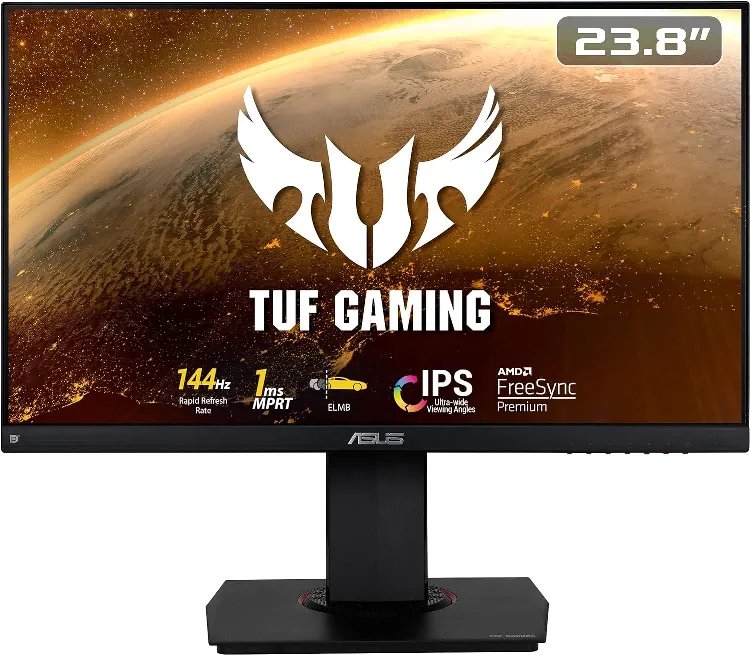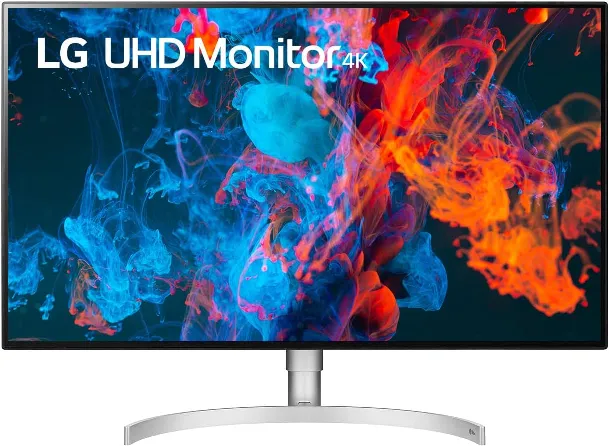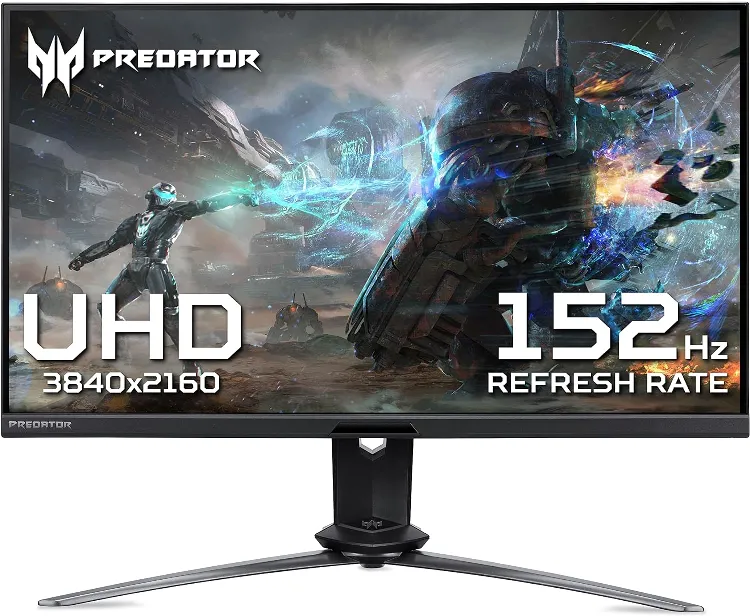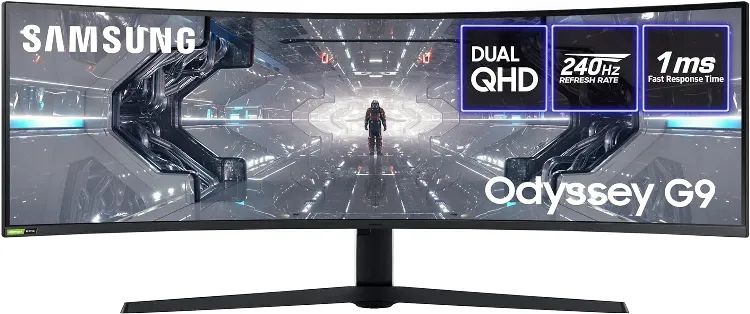Choosing the Perfect PC Monitor Ultimate Guide
Contents
Toggle
Choosing the right PC monitor can be a daunting task, especially with the plethora of options available in the market. Whether you’re a gamer, a content creator, or someone who uses a computer for everyday tasks, the monitor you choose can significantly impact your experience. In this guide, we’ll explore key factors such as size, resolution, panel type, refresh rate, and adaptive sync to help you make an informed decision.
Why Monitor Size and Resolution Matter
Size and resolution are often the first things people consider when choosing a monitor. While a larger screen can provide a more immersive experience, it’s essential to balance size with resolution for optimal clarity. For example, a 24-inch monitor is generally suitable for 1080p resolution, while a 27-inch monitor is better suited for 1440p.
Size and Resolution Comparison Table
| Monitor Size | Resolution | Use-Case |
|---|---|---|
| 24-inch | 1080p | Ideal for basic tasks and small workspaces. |
| 27-inch | 1440p | A balanced choice for gaming and professional use. |
| 32-inch | 4K | Best for multitasking and high-definition content. |
Understanding Panel Types
The type of panel your monitor uses can significantly affect image quality. IPS panels are known for their excellent color reproduction and wide viewing angles but suffer from lower contrast ratios. On the other hand, VA panels offer better contrast but have limited viewing angles. TN panels are fast but lack in color quality, and OLED panels provide excellent color and contrast but are expensive.
Panel Type Comparison Table
| Panel Type | Pros and Cons |
|---|---|
| IPS | Best all-around, but has poor contrast. |
| VA | Excellent contrast, but limited viewing angles. |
| TN | Fast response time, but poor color reproduction. |
| OLED | Outstanding contrast and color, but expensive and risk of burn-in. |
Refresh Rates
Refresh rates are another crucial factor to consider, especially if you’re into gaming. A higher refresh rate, measured in Hertz (Hz), results in smoother motion and better responsiveness. Standard refresh rates include 60Hz, 144Hz, and 240Hz, with higher rates generally offering a better experience but at a higher cost.
Refresh Rates Comparison Table
| Refresh Rate | Impact |
|---|---|
| 60Hz | Standard for most tasks and video playback. |
| 144Hz | Ideal for fast-paced gaming. |
| 240Hz | Best for competitive gaming, but expensive. |
Additional Features
Adaptive Sync
Adaptive sync technologies like FreeSync (AMD) and G-Sync (NVIDIA) can significantly improve your gaming experience by reducing screen tearing and stutter. These technologies synchronize the refresh rate of your monitor with the frame rate of your graphics card, resulting in smoother visuals.
Adaptive Sync Comparison Table
| Technology | Compatibility | Benefit |
|---|---|---|
| FreeSync | AMD GPUs | Reduces screen tearing and is generally cheaper. |
| G-Sync | NVIDIA GPUs | Offers premium performance but at a higher cost. |
Connectivity Options
Modern monitors offer a variety of connectivity options, including HDMI, DisplayPort, and USB-C. Each has its own set of advantages and disadvantages, so it’s essential to consider what devices you’ll be connecting to your monitor.
Connectivity Options Comparison Table
| Port Type | Advantages and Disadvantages |
|---|---|
| HDMI | Widely used, but limited to lower refresh rates. |
| DisplayPort | Ideal for high refresh rates and resolutions, but less common. |
| USB-C | Versatile and modern, but not all monitors support it. |
Best-Selling Products Table
| Product Name | Key Features |
|---|---|
| Dell UltraSharp U2720Q | 27-inch, 4K, IPS panel |
| ASUS VG279Q | 27-inch, 1080p, 144Hz, IPS panel |
| LG 32UL950-W | 32-inch, 4K, HDR, USB-C |
| Acer Predator X27 | 27-inch, 4K, 144Hz, G-Sync |
| Samsung Odyssey G9 | 49-inch, QLED, 240Hz, FreeSync |
See Also:
Dell UltraSharp U2720Q
Dell UltraSharp UP2720Q – LED monitor – 27″ (27″ viewable) – 3840 x 2160 4K – IPS – 250 cd/m² – 1300:1-6 ms – Thunderbolt, 2xHDMI, DisplayPort
ASUS VG279Q
ASUS TUF Gaming VG279QM HDR Gaming Monitor – 27 Inch Full HD (1920 x 1080), Fast IPS, 280Hz, 1 ms (GTG), Extreme Low Motion Blur Sync, G-SYNC Compatible, DisplayHDR 400, Black

LG 32UL950-W
LG UltraFine Display 32UL950 31.5-inch – UHD 4K 3840×2160 Nano IPS, HDR, Thunderbolt 3

ACER PREDATOR X27
Acer Predator X28 28 Inch 4K UHD Gaming Monitor (IPS Panel, G-SYNC, NVIDIA Reflex, 144Hz, 0.2ms, DP, HDMI, USB Hub, Height Adjustable , Black)

SAMSUNG Odyssey
Samsung Odyssey G9 LC49G95TSSPXXU 49″ Curved QLED Gaming Monitor – 5120 x 1440 Dual Quad HD, 240 Hz, 2xHDMI, DisplayPort, Height Adjust, Freesync

Making the Final Decision
Before you make your purchase, consider the following questions:
- What is your primary use-case? (Gaming, Professional Work, General Use)
- What size and resolution fit your workspace?
- Which panel type suits your needs?
- Are additional features like high refresh rates and adaptive sync important to you?
For more on design considerations, read our article on Design considerations for aesthetics.
Conclusion
Choosing the right PC monitor is a crucial decision that can significantly impact your computing experience. Whether you’re gaming, working, or enjoying media, the right monitor can make all the difference. Take your time to consider all the factors discussed in this guide, and you’ll be well on your way to making an informed decision.
FAQs
| Question | Answer |
|---|---|
| What is the best monitor size for gaming? | A 27-inch monitor with a 1440p resolution is generally considered ideal for gaming. |
| Is a higher refresh rate better? | Yes, a higher refresh rate provides smoother motion and is especially beneficial for fast-paced gaming. |
| What is the difference between FreeSync and G-Sync? | FreeSync is compatible with AMD GPUs, while G-Sync works with NVIDIA GPUs. Both reduce screen tearing but may differ in cost. |
| Are curved monitors better? | Curved monitors can offer a more immersive experience but may not be suitable for all use-cases, such as professional graphic design. |
| What does “adaptive sync” mean? | Adaptive sync technologies like FreeSync and G-Sync synchronize the monitor’s refresh rate with the graphics card’s frame rate for smoother visuals. |
| Is 4K worth it? | 4K provides higher resolution and clarity but may require a more powerful graphics card, especially for gaming. |
| What are IPS, VA, and TN panels? | IPS offers the best color and viewing angles, VA has better contrast, and TN has faster response times. |
| How important are connectivity options? | It depends on your setup. Make sure the monitor has the ports you need for your devices. |
See Also:

